Understanding Rabbit Behavior

By Jess Simmonds, Expert Reviewer for Repellent Guide
published: Aug 01, 2023 | updated: Aug 01, 2023
1. Understanding Rabbit Behavior
Before diving into the various repellents, it's instrumental to comprehend the inherent behaviors and predilections of rabbits:
Sensory Perception: Rabbits primarily depend on their sense of smell and taste. Their noses are always twitching, sampling the air for potential threats or food sources. With over 100 million scent cells, rabbits possess an olfactory system that's extremely nuanced, allowing them to detect and identify a wide array of odors.
Dietary Habits: Rabbits, as herbivores, indulge in a variety of plants. Their diet encompasses everything from tender grass shoots to veggies in our gardens. However, their approach to food is characterized by caution. They often nibble or taste-test unfamiliar plants before deciding whether it's safe to eat in larger amounts. This behavior is a survival mechanism, allowing them to avoid potentially harmful or toxic plants.
Natural Predators and Defense Mechanisms: Rabbits are prey animals, meaning they have numerous predators to worry about. From foxes to hawks, their life in the wild is always under threat. As a result, they've developed acute senses to detect these predators. Their large ears, for instance, can pick up sounds from afar, allowing them to detect potential threats and escape in time. This sensitivity also extends to their sense of smell, where they can detect the scent of predators and avoid areas where these scents are prevalent.
Understanding these fundamental behaviors gives us insights into why certain repellents work and how they exploit the rabbit's natural instincts and behaviors.
2. Olfactory-Based Repellents
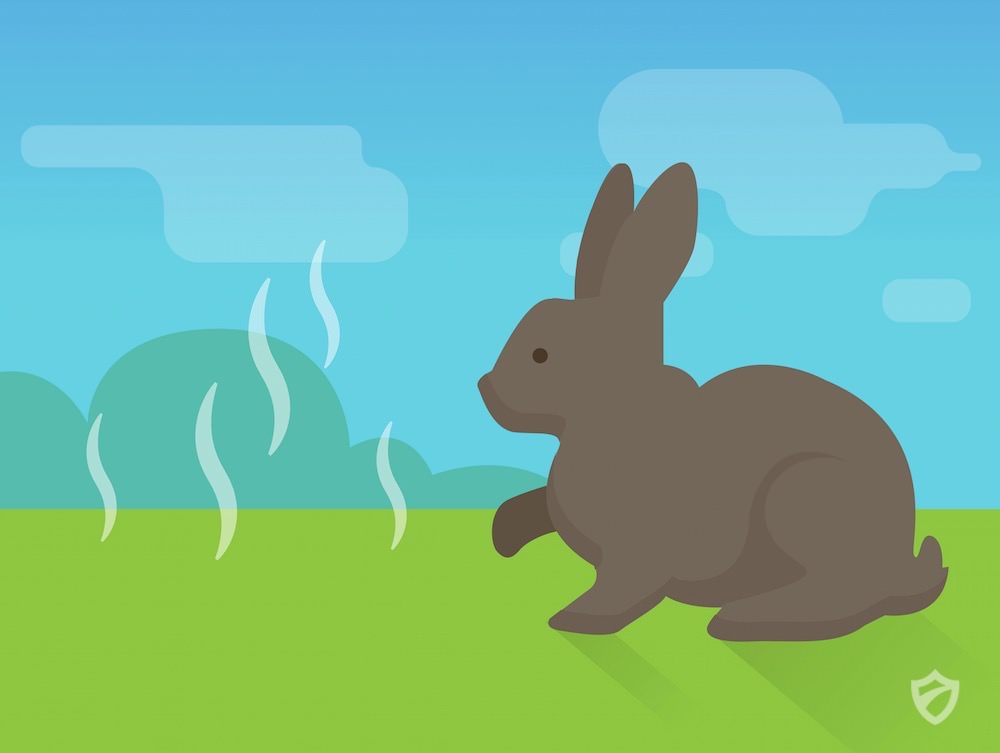
The olfactory system, or the sense of smell, is particularly strong in rabbits. This is a primary reason why many repellents targeting rabbits tap into this sensory vulnerability. Here’s how:
Predator Scents: The most direct way to deter rabbits using their sense of smell is by leveraging the scent of their natural predators. Products like fox or coyote urine can be bought in many gardening stores. These exude an aroma that, to a rabbit, signals the presence of a threat, discouraging them from venturing near.
Spicy Smells: Rabbits have sensitive noses, and strong scents can be off-putting to them. Ingredients like crushed red pepper, garlic, and onions are often used as a base for these repellents. Sprinkling these in areas where rabbits are a nuisance can keep them at bay. However, remember to reapply after rainfall, as their potency diminishes with moisture.
Aromatic Plants: There are certain plants that rabbits naturally dislike due to their strong aroma. Planting herbs like rosemary, thyme, and lavender can act as a natural barrier. Not only will these keep rabbits away, but they'll also beautify your garden and can be used for cooking!
Commercial Repellents: Several commercial repellents in the market use strong, off-putting scents to deter rabbits. While these can be highly effective, ensure to read the labels and ensure that they’re safe for other animals and children who might be frequenting the area.
When using olfactory repellents, it's important to rotate them or use them in combination to prevent rabbits from becoming accustomed to a single scent. Keeping them on their toes (or, in this case, their noses) ensures consistent deterrence.
3. Taste-Based Repellents
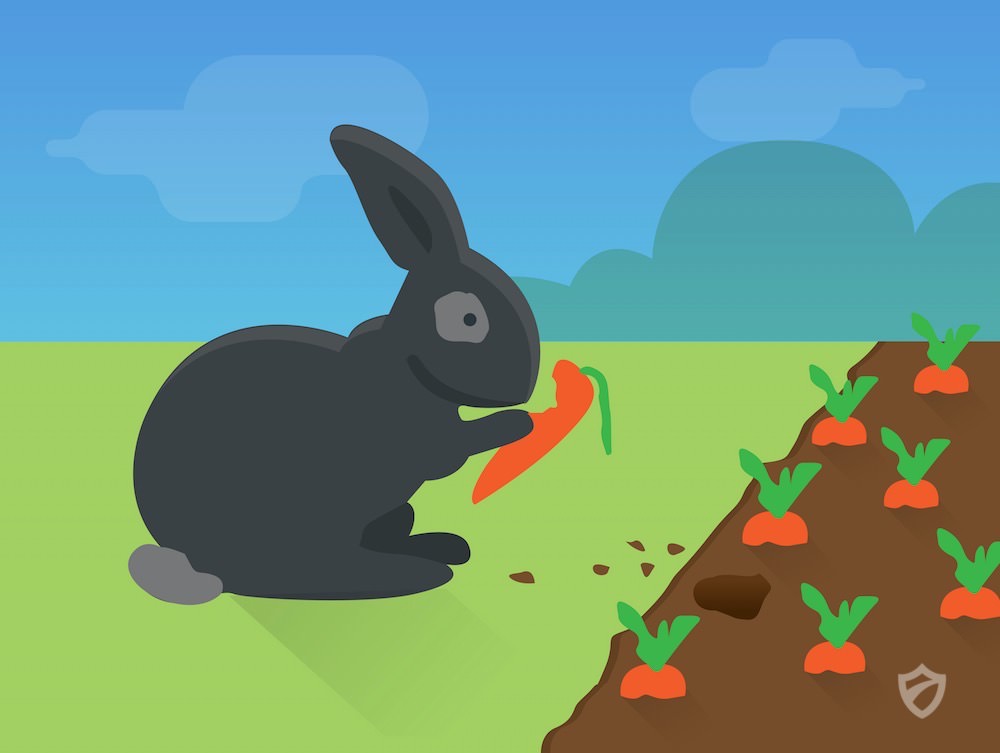
While it's known that rabbits are driven by their sense of smell, they also have discerning taste buds. Leveraging this can be a formidable tactic to keep them from snacking on your garden. Here's how:
Bitter Agents: Rabbits tend to be deterred by bitter flavors. Commercially available taste aversion sprays often have bittering agents that, when applied to plants, render them unappetizing to these critters. Once a rabbit takes a bite and tastes the bitterness, they're likely to be dissuaded from taking another.
Homemade Sprays: A mix of water, a little dish soap (to help the solution adhere to plants), and spicy ingredients like hot pepper or garlic can be sprayed onto plants. The unpleasant taste will deter most rabbits from feeding further. Be cautious, though; if you intend to consume these plants, you'll want to wash them thoroughly.
Egg Mixtures: A diluted mixture of eggs and water sprayed onto plants can deter rabbits. The taste and smell of eggs are not appealing to them, and it also adds a sticky layer to plants that rabbits dislike.
Safe Store-bought Solutions: There are myriad taste-based repellents available in stores. However, always ensure they're environmentally friendly and safe for other animals and humans. The key is to make your garden's offerings less appealing than the surrounding wild foliage.
One significant advantage of taste-based repellents is that they target only the rabbits or other herbivores munching on your plants. Predators, beneficial insects, and other garden visitors remain unaffected.
4. Physical and Visual Deterrents
Physical barriers and visual cues can be highly effective in keeping rabbits at bay. They act as the first line of defense for your garden. Here's how to utilize them:
- Fencing: A well-constructed fence can be the most straightforward solution to keep rabbits out. Consider using chicken wire or mesh with holes smaller than an inch. Ensure it's buried at least 6-12 inches underground to prevent rabbits from digging underneath. The fence should also be tall enough (at least 2-3 feet) to prevent them from hopping over.
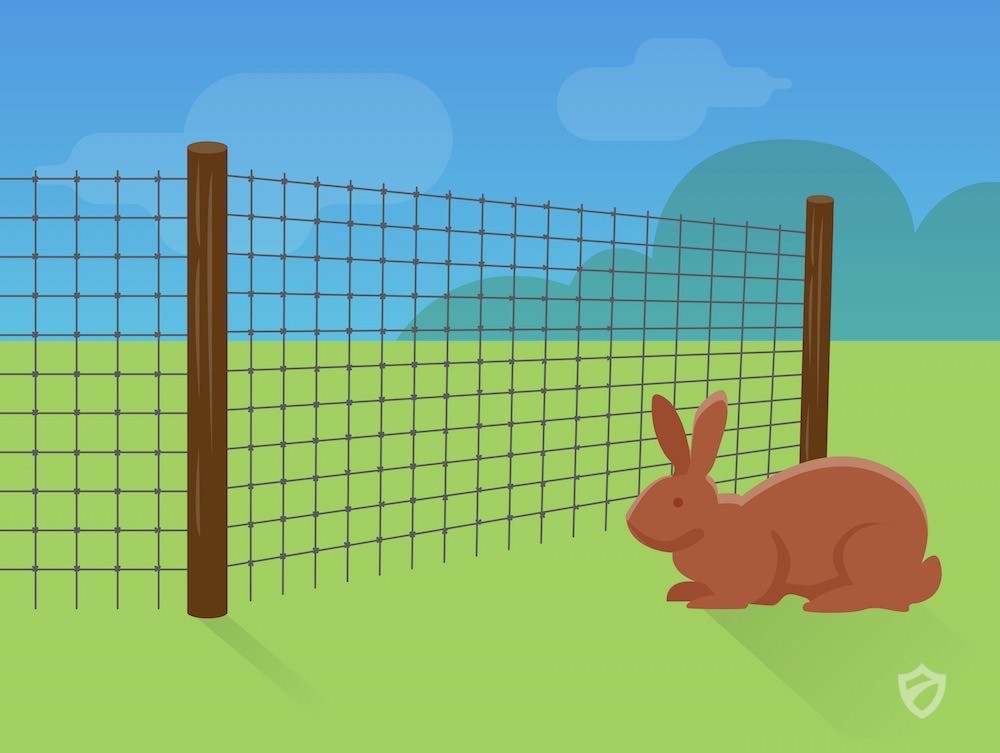
Raised Garden Beds: Elevating your plants can be an effective and aesthetically pleasing way to keep them out of reach of rabbits. It's harder for rabbits to access plants that are off the ground, and raised beds can also provide benefits like better soil drainage and easier access for gardeners.
Garden Cloches: These are protective covers (usually made of clear plastic or mesh) placed over individual plants or groups of plants. They not only protect against rabbits but also against other pests and harsh weather conditions.
Reflective Objects: Rabbits are skittish creatures. Placing shiny, reflective objects like aluminum foil or old CDs around your garden can scare them away. The unexpected reflections and flashes of light can make them think twice before venturing into your garden.
Motion-activated Sprinklers: These devices can be a fun and efficient way to deter rabbits. When a rabbit comes close, the motion sensor triggers, releasing a burst of water. The unexpected spray startles the rabbit, making it less likely to return.
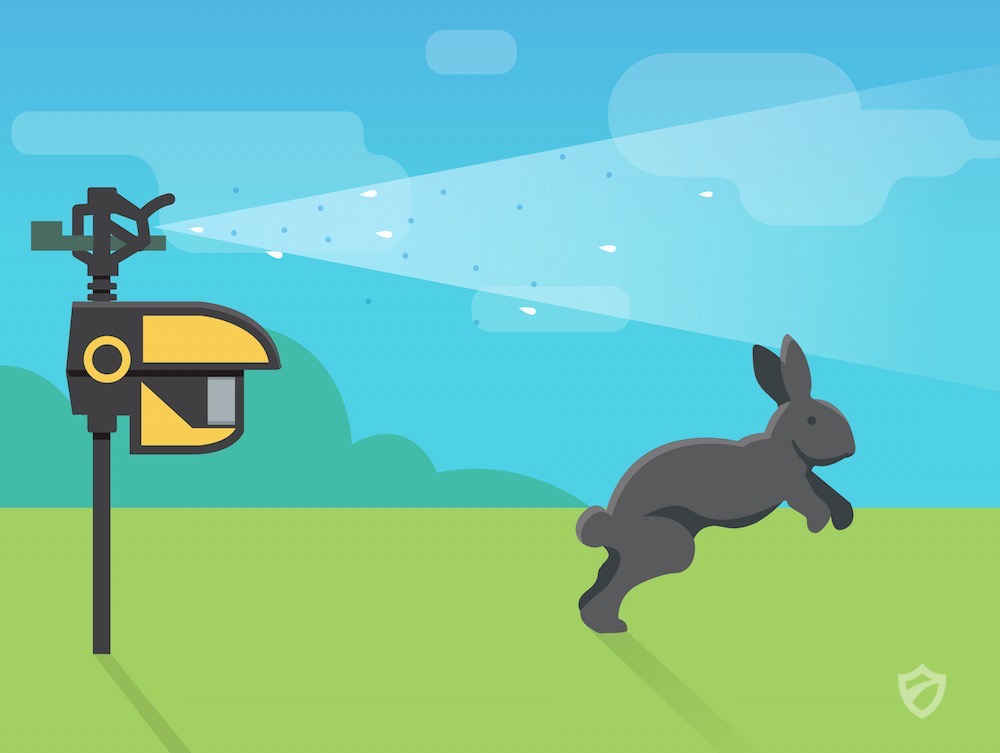
Regularly inspecting and maintaining physical barriers is crucial. Over time, rabbits might find weak points or new ways to navigate barriers, so staying one step ahead is essential.
5. Auditory Deterrents
The power of sound can be harnessed as a unique weapon against our furry garden invaders. Rabbits, being prey animals, are always on high alert for potential threats. Distinctive noises can be used to spook them and discourage them from entering your property.
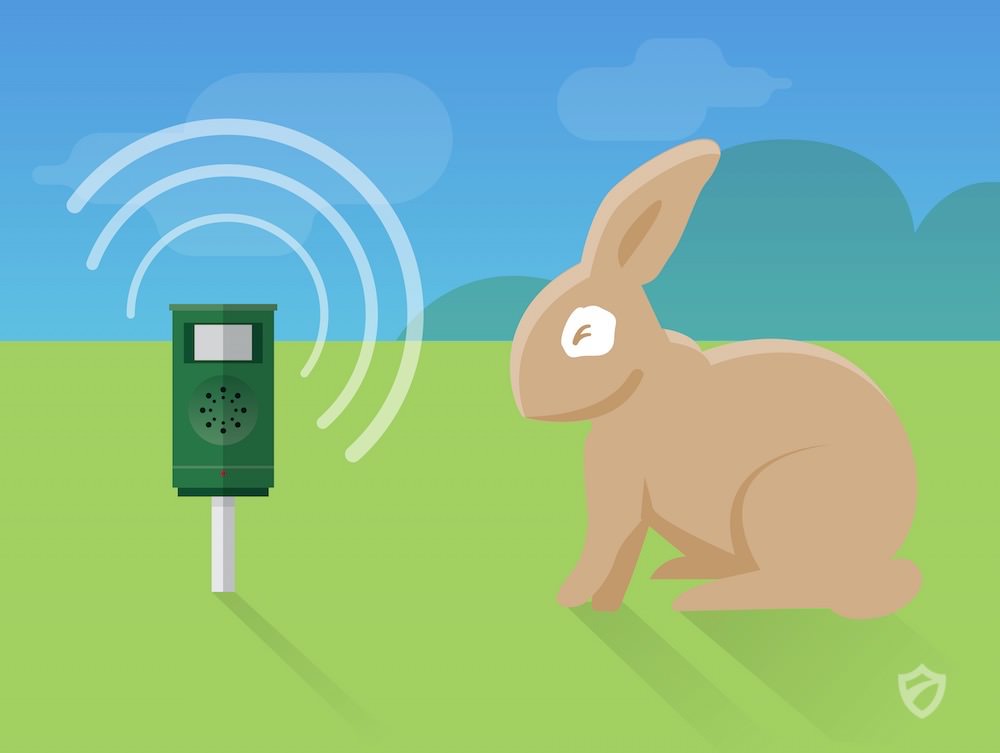
Ultrasonic Repellers: These devices emit high-frequency sounds that are unpleasant to rabbits but typically inaudible to humans. They can be an effective means to deter rabbits, especially when combined with other methods. However, results can vary based on the specific species and individual tolerance levels.
Motion-activated Noise Machines: Similar to the sprinklers, these devices are activated when a rabbit (or any other creature) comes within a certain range. They then emit a sudden, loud noise, startling the rabbit and often deterring future visits. From radios to buzzers, a variety of sounds can be effective.
Garden Guards: Some innovative gardeners have used battery-operated radios, set to talk stations, as an unexpected ally. The human voice can deter rabbits, making them think there's potential danger nearby.
Wind Chimes: The random clangs and chimes produced by these decorative items can be enough to unsettle rabbits, making them hesitant to approach your garden.
While sound is a powerful tool, it's important to be considerate. If you're living in a densely populated area or have close neighbors, the noise might be more of an annoyance to them than to the rabbits. It's also worth noting that, over time, rabbits may become desensitized to certain sounds. So, periodically changing your auditory deterrent strategy can enhance its effectiveness.
6. Beneficial Predators and Companions
Nature has its own checks and balances. Sometimes, the best way to manage a pest problem is to introduce or encourage its natural predators or deterrents. Here's how you can make use of this natural balance:
- Owls and Hawks: These birds are natural predators of rabbits. By creating an environment that's attractive to them, such as installing owl boxes or tall perches, you can deter rabbits. The mere presence of these birds can scare away rabbits, even if the birds aren't actively hunting.


- Dogs and Cats: The presence of a dog or cat in your yard can be enough to deter rabbits. Their scent alone is often enough to keep rabbits at bay. However, ensure your pets are safe from consuming any potentially harmful deterrents you might be using in your garden.

Plant Companions: Some plants act as natural rabbit deterrents. Marigolds, for instance, are often touted as a rabbit-repellent plant. Rabbits dislike their smell and will typically avoid areas where they're planted. Other plants, such as onions and garlic, can also deter rabbits with their strong scents.
Nematodes: These are microscopic worms that can be beneficial in controlling various garden pests. While they don't directly deter rabbits, they can help control other pests that might be attracting rabbits to your garden in the first place.
Beneficial Insects: Encouraging insects like ladybugs, spiders, and praying mantises can keep down the populations of smaller pests. A balanced ecosystem in your garden can reduce the overall attractiveness to rabbits.
Remember, the goal isn't to harm the rabbits but to deter them. It's about creating an ecosystem where your garden isn't the primary source of attraction for them. Every garden and environment is unique, so experimenting and finding what combination of methods works best for you is key.
7. Regular Maintenance and Monitoring
Consistency is key when it comes to maintaining a rabbit-free garden. The habits you form and the routines you establish can play a crucial role in keeping these pesky invaders at bay.
Routine Checks: Start by establishing a daily or weekly routine to inspect your garden. Check for any signs of rabbit activity, such as droppings, chewed plants, or burrow entrances. Early detection can prevent a small problem from becoming a significant infestation.
Repair Fences and Barriers: Over time, barriers like fences can deteriorate. Rabbits are keen observers and will quickly take advantage of any weak spots. Regularly inspect your barriers for holes, gaps, or areas where the ground may have eroded, and make necessary repairs promptly.
Reapply Natural Repellents: If you're using natural or homemade repellents, remember that they can degrade or wash away over time, especially after rain. Make it a habit to reapply these solutions frequently to ensure they remain effective.
Monitor Plant Health: Healthy, vibrant plants are less attractive to pests than weak, dying ones. Ensure your plants are well-nourished and free from other pests. If you notice a plant consistently attracting rabbits, consider relocating it or surrounding it with more repellent plants.
Keep a Garden Journal: This might seem old-fashioned, but jotting down observations can be incredibly helpful. Track when and where you notice rabbit activity, which deterrents you've applied, and how effective they've been. Over time, you'll start to notice patterns and can adjust your strategies accordingly.
Engage with the Community: Talk to your neighbors and local gardening groups. They can provide invaluable insights into what's working in your area and what isn't. Remember, if your entire neighborhood takes measures against rabbits, it becomes a less appealing destination for them.
In essence, vigilance is your best friend. The more proactive and consistent you are in your monitoring and maintenance efforts, the better equipped you'll be to deter rabbits and enjoy a thriving garden.
Certainly! Let's delve deeper into the "Seeking Expert Assistance" section.
8. Seeking Expert Assistance
There are times when DIY methods might not cut it, especially if you're dealing with a persistent rabbit problem or a large infestation. That's when seeking professional guidance or services can be invaluable.
Local Agricultural Extension: Almost every region has an agricultural extension office affiliated with local universities or government departments. These extensions often provide resources, workshops, and expert advice on managing pests, including rabbits. They can offer tailored suggestions based on your specific area and its unique challenges.
Pest Control Services: If the rabbit population in your garden is overwhelming, it might be time to call in the professionals. Look for pest control services with experience in humane and environmentally friendly methods. Remember, the goal isn't to harm the rabbits but to deter and relocate them.
Garden Design Consultants: Sometimes, the design of your garden itself can be the root cause of attracting rabbits. Professionals who specialize in garden layout and design can offer insights into rearranging your space to be less appealing to pests while enhancing its beauty and functionality.
Wildlife Relocation Specialists: If you find that you have a significant number of rabbits nesting on your property, it may be beneficial to hire a specialist who can safely and humanely relocate them to a more suitable environment. This ensures the animals are not harmed and are given a chance to thrive elsewhere.
Join Gardening Forums and Groups: Online forums, social media groups, and local gardening clubs can be a treasure trove of knowledge. Engaging with fellow garden enthusiasts can offer fresh perspectives, new solutions, and tried-and-true tactics that have worked for others in similar situations.
Attend Workshops and Seminars: Keep an eye out for local workshops, seminars, or webinars focused on pest control and gardening. Learning from experts and networking with other attendees can provide you with a host of new strategies and tools to try.
While it's always commendable to tackle problems on your own, there's no shame in seeking help when needed. Leveraging expert knowledge can save you time, money, and the distress of seeing your beloved garden ravaged by pests.
9. Respectful Coexistence: Understanding Rabbit Behavior
The most effective way to manage any form of wildlife in our spaces is to understand their habits, needs, and behaviors. By understanding rabbits, you not only find ways to deter them but also learn to coexist with them in a manner that's respectful to both your garden and the creatures themselves.
Natural Habits: Rabbits are crepuscular, which means they are most active during the early morning and late evening. This information can help you time certain deterrent activities, like spraying repellents or inspecting barriers, to be most effective during their active periods.
Dietary Preferences: While rabbits are notorious for eating many garden plants, they do have preferences. For instance, they are fond of tender shoots, young plants, and some vegetables like beans and peas. By understanding their tastes, you can prioritize which plants need the most protection.
Breeding Cycles: Rabbits can reproduce rapidly, with multiple litters in a year. Recognizing when they breed can help you prepare in advance, reinforcing barriers or applying repellents right before a new batch of young rabbits starts exploring.
Predators and Threats: Rabbits have natural predators, such as hawks, foxes, and owls. While you shouldn't rely on these predators as a control method, understanding the dynamics can help you appreciate the broader ecosystem at play.
Sheltering Habits: Rabbits often seek shelter in burrows, under sheds, or amidst thick vegetation. If you're looking to deter them, ensure you don't have many of these attractive sheltering options available. Conversely, if you're aiming for coexistence, providing a designated area for them can keep them away from your main garden.
Social Behavior: Rabbits are social creatures and often move in groups. This means that if you spot one rabbit, there are likely more nearby. It's essential to address deterrent measures comprehensively, considering the potential of multiple rabbits causing damage.
By striving to understand these creatures better, we can make informed decisions that benefit our gardens without causing unnecessary harm to the wildlife. After all, it's possible to have a beautiful, thriving garden while also being a good steward to the environment and its many inhabitants.
10. Common Myths and Misunderstandings
When it comes to deterring rabbits from gardens, numerous myths circulate that can lead to misguided efforts. Here's a breakdown of some of the most common misconceptions and the truths behind them:
Myth 1: Mothballs Keep Rabbits Away: This age-old remedy is frequently mentioned, but not only is it ineffective against rabbits, using mothballs outside can be harmful to the environment and other animals. They can contaminate soil and water and are toxic to pets and humans if ingested.
Myth 2: Rabbits Won't Eat Spicy Plants: While rabbits have shown aversion to certain plants due to their taste, they don't have an innate dislike for all spicy or aromatic plants. Some might avoid them, while others might see them as another food source, especially when options are limited.
Myth 3: Ultrasonic Repellents Are Always Effective: Ultrasonic repellents, devices that emit a high-frequency sound, are marketed as a one-stop solution for all pests. However, their efficacy against rabbits is questionable. Moreover, these devices can also disturb pets and beneficial wildlife.
Myth 4: Rabbits Only Eat Vegetables: While a large portion of a rabbit's diet consists of plants, they are also known to nibble on bark, especially in the winter when other food sources are scarce. Therefore, even non-vegetable gardens aren't entirely safe.
Myth 5: Decoy Predators Always Work: Placing statues of owls or hawks can initially deter rabbits due to their instinctive fear of predators. However, over time, they might realize these are non-threatening decoys and ignore them.
Myth 6: Rabbits Don't Like Noise: While sudden loud noises can startle rabbits, they can become accustomed to consistent sounds, such as those from wind chimes or radios. Relying solely on noise can prove ineffective in the long run.
Dispelling these myths is crucial in adopting strategies that genuinely work. By basing your rabbit deterrent measures on scientific understanding and proven methods, you can save both time and resources, ensuring that your garden remains vibrant and rabbit-free.
11. Safety Precautions When Using Deterrents
The safety of your household, pets, and the environment should always be at the forefront when implementing any rabbit deterrent measures. Let's explore some essential safety guidelines to bear in mind:
Read Labels Carefully: If you’re purchasing a commercial rabbit repellent, always read and follow the manufacturer's instructions. Misuse can lead to unintended consequences, including harming plants or posing risks to other wildlife.
Natural Doesn't Always Mean Safe: Just because a repellent is natural or organic doesn't mean it's harmless. Some natural substances can be irritants or even toxic when ingested in large amounts. Always be mindful of where and how you apply these repellents.
Watch Out for Beneficial Wildlife: While you're trying to deter rabbits, be cautious not to drive away or harm beneficial wildlife. For instance, certain deterrents might be unpalatable or harmful to birds or pollinators.
Store Repellents Safely: Ensure that all repellents, even natural or homemade ones, are stored in a safe place, out of reach of children and pets. Label containers clearly and consider childproof lids.
Monitor Pets After Applying Deterrents: If you have pets that roam your garden, observe them after applying any deterrents. Make sure they aren't showing any signs of distress, and they aren't consuming large amounts of treated plants.
Consider Non-Chemical Approaches First: Fencing, plant selection, and habitat modification can often provide long-term solutions without the need for frequent reapplication of repellents or the associated risks.
Rotate Deterrents Periodically: Rabbits, like many animals, can become accustomed to certain smells or tastes over time. By rotating your deterrent methods, you ensure that they remain effective and reduce the chances of rabbits getting used to them.
Seek Expert Advice: If in doubt, seek advice from local agricultural or gardening experts. They can offer guidance tailored to your specific region and its unique challenges.
Prioritizing safety ensures that your efforts to keep rabbits at bay don’t inadvertently cause harm to others. A balanced approach, considering both efficacy and safety, is the key to a thriving, rabbit-free garden.
12. Maintaining a Rabbit-Resistant Garden
While it's essential to implement measures to repel and deter rabbits initially, long-term success lies in consistent maintenance and a proactive approach to rabbit-proofing your garden. Here's how to ensure lasting results:
Regularly Inspect Fencing and Barriers: Over time, even the sturdiest fences can weaken or develop gaps. It's crucial to inspect and mend any damage promptly. Remember, rabbits are keen on finding entry points, so don't underestimate even the smallest of gaps.
Reapply Repellents After Rain: Water can wash away many of the deterrents you apply to your garden, be they natural or commercial. After significant rainfall, make a habit of reapplying them to maintain their effectiveness.
Stay Updated on Local Rabbit Populations: If you know there's been an uptick in rabbit populations or sightings in your area, be extra vigilant. More rabbits mean a higher likelihood of them finding their way into your garden.
Plant Strategically: Over time, you might notice that some plants are rabbit favorites, while others are largely left alone. Consider gradually replacing the favorites with more rabbit-resistant varieties.
Clear Out Hiding Spots: Regularly trim thick bushes, and clear out piles of leaves or debris where rabbits might hide or build nests. A garden with fewer hiding spots is less attractive to these critters.
Use a Mix of Deterrents: As we've mentioned before, rabbits can get used to certain deterrents over time. By mixing up your strategies, you ensure they don't grow comfortable in your garden.
Encourage Natural Predators: While it's not a method for everyone, allowing natural predators like birds of prey or foxes to visit your garden can deter rabbits. Of course, this should be balanced with safety considerations, especially if you have small pets.
Stay Informed: Gardening techniques and products evolve. Stay updated with the latest in rabbit-repelling technology and methods by joining local gardening clubs or forums.
A garden free from rabbit damage isn't just about deterrence; it's about creating an environment where rabbits don't want to be. By staying proactive and adjusting your strategies as needed, you can enjoy a garden that thrives season after season.
13. Engaging With a Community for Support
Navigating the challenges of rabbit deterrence can feel isolating, especially if you're new to gardening or have recently moved to an area with a significant rabbit population. However, remember that you're not alone in this. Connecting with a community can offer numerous benefits:
Shared Experiences and Solutions: Every gardener has their unique stories and solutions. Some might have tried-and-tested methods that worked wonders for them but are new to you. Sharing these experiences can lead to discovering novel solutions.
Bulk Buying of Repellents: Often, buying in bulk can lead to savings. By collaborating with neighbors or community members, you can purchase rabbit repellents or deterrents in larger quantities and split the cost.
Group Efforts in Rabbit Relocation: If multiple gardens or properties in your vicinity face rabbit issues, coming together for a community-wide effort can be more effective than individual actions. This can be in the form of coordinated repellent application days or even hiring a professional for large-scale rabbit relocation.
Stay Updated on Local Trends: Engaging with a community allows you to be informed about changes in rabbit behavior or population spikes in your area. Knowledge is power, and in this case, knowledge can help you be proactive.
Emotional Support: Dealing with persistent garden pests can be frustrating. Having a community to lean on can offer emotional support and understanding. A problem shared is a problem halved, after all.
Workshops and Learning Sessions: Communities often organize workshops or learning sessions where experts might be invited to share their knowledge. Such sessions can be invaluable in learning more about rabbit behavior and the latest deterrent techniques.
Documenting and Research: Communities can engage in citizen science by documenting rabbit behavior, numbers, and deterrent successes or failures. Such documented efforts can be beneficial for local agricultural extensions or wildlife researchers.
In today's digital age, community engagement doesn't just mean your immediate neighbors. Online forums, social media groups, and gardening apps bring together like-minded individuals from all corners of the world. So whether it's your next-door neighbor or a gardener from another continent, there's a wealth of knowledge and support available at your fingertips.
14. Utilizing Technology for Rabbit Deterrence
In an era where technology plays a pivotal role in almost every facet of our lives, it's only logical to incorporate it into our efforts to deter rabbits. Here's how technology can be a game-changer in your rabbit deterrence strategy:

Motion-Activated Sprinklers: These are one of the most popular tech tools in the rabbit-deterrence arsenal. When a rabbit enters your garden, the motion sensor detects it and activates the sprinkler, sending a jet of water towards the intruder. Not only does this scare away the rabbit, but it also offers the added benefit of watering your garden.
Ultrasonic Repellents: Devices emitting ultrasonic frequencies, which are inaudible to humans but distressing to rabbits, can deter them from your garden. However, their effectiveness can vary based on the specific product and the local rabbit population's adaptability.
Solar-Powered Repellents: With environmental sustainability in mind, many repellent devices now come in solar-powered variants. These devices can utilize ultrasonic sounds, flashing lights, or a combination of both to ward off rabbits and other pests.
Garden Surveillance: Cameras equipped with night vision can provide insights into rabbit activity during their most active hours. Knowing their patterns, routes, and feeding spots can assist in placing deterrents more effectively.
Apps and Online Platforms: Several gardening apps and online platforms provide real-time alerts and advice based on user input and localized data. For instance, if there's a sudden spike in rabbit activity in your vicinity, being a part of such a platform can offer you a heads up.
Electronic Fencing: A step up from the traditional mesh or chicken wire, electronic fences give a mild shock to any rabbit trying to breach your garden. It's humane and serves as an effective deterrent, as the slight discomfort teaches rabbits to stay away.
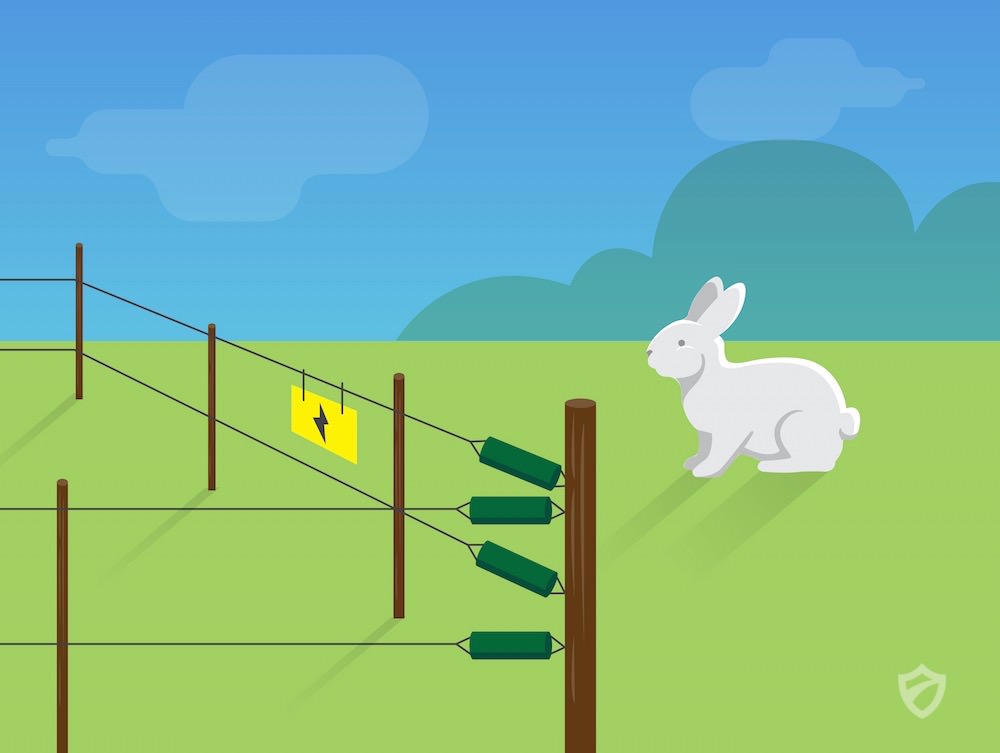
- Automated Garden Guards: A newer entry in the market, these robotic guards patrol your garden and use various non-harmful methods, from sounds to lights, to deter rabbits and other pests.
When using technology, it's essential to remember that while they can be incredibly effective, they should be part of a broader strategy. Over-reliance on a single method, no matter how technologically advanced, might lead to adaptability in the rabbit population, rendering your efforts less effective over time.
15. Educating Your Community for Collective Action
It's often said that there's strength in numbers. This principle holds true in rabbit deterrence. By sharing information and coordinating efforts, you can create an environment less hospitable to rabbits, reducing their impact across a wider area.
Workshops & Informational Sessions: Hosting or attending community workshops can be a great way to share knowledge about rabbit behavior and the latest deterrence techniques. These sessions can include demonstrations of repellent application, building fences, or even lessons on the local rabbit species.
Leaflet & Brochure Distribution: If you've found a method that works exceptionally well for you, consider sharing it with your neighbors. Create informational brochures or leaflets detailing the steps you took and distribute them in your community.
Community Gardening Days: Organize days where the community comes together to install rabbit deterrents in public spaces or vulnerable gardens. This not only helps protect these areas but also serves as an educational experience for everyone involved.
Social Media Groups & Platforms: Create or join community-based groups on platforms like Facebook or Nextdoor. These platforms can be used to share experiences, discuss the effectiveness of various repellents, and provide a support system for those facing severe rabbit infestations.
Pooling Resources: Often, buying deterrents or repellents in bulk can be more cost-effective. By pooling resources, neighborhoods can purchase these at discounted rates. This is especially beneficial for high-end tech solutions like ultrasonic repellents or motion-activated sprinklers.
Shared Monitoring Systems: Setting up shared surveillance, like a neighborhood watch but for rabbits, can help in identifying patterns, sharing alerts, and coordinating timely responses.
Engaging Local Authorities: Sometimes, the rabbit problem can be too vast for a community to handle on its own. In such cases, engaging local authorities or wildlife organizations can lead to larger-scale solutions, such as controlled culling or relocation programs.
Remember, while individual efforts can be fruitful, a collective approach amplifies the effectiveness of deterrence strategies. By ensuring that the entire community is well-informed and coordinated, the chances of keeping rabbits at bay significantly increase.
16. Monitoring & Iteration: A Long-Term Strategy
While your initial efforts may be fruitful in deterring rabbits, the dynamics of local wildlife can be fluid and change with time. Therefore, consistent monitoring and iteration are crucial to ensure that your garden remains rabbit-free in the long run.
Regular Property Inspections: Make it a habit to walk around your property, especially in the early morning or late evening when rabbits are most active. Look out for signs of fresh burrows, droppings, or chewed vegetation. These inspections can help you identify and address potential infestations before they escalate.
Maintain a Deterrence Diary: Keeping a diary or a log of all the deterrence measures you've taken and their outcomes can be immensely useful. If a particular method stops being effective, you can refer back to your notes and tweak your strategy or try something new.
Employ Trail Cameras: Invest in motion-activated trail cameras to monitor rabbit activity around your property. This not only helps in understanding their behavior and patterns but can also guide you in placing deterrents in the most affected areas.
Stay Updated with New Solutions: The market for rabbit repellents and deterrents is ever-evolving. Stay updated with the latest products or natural solutions by subscribing to gardening magazines, joining online forums, or being a part of local gardening clubs.
Seek Feedback from Neighbors: Regularly communicate with your neighbors about the rabbit situation. Their experiences and feedback can offer new insights and methods that you might not have considered.
Evaluate and Adjust Every Season: Rabbit behavior and patterns might differ from one season to another. While a particular deterrent might work in the summer, it might not be as effective in the winter. Hence, regularly evaluate the effectiveness of your strategies and adjust accordingly.
Persistence is Key: Remember, rabbits are persistent creatures. And while it might seem like a game of cat and mouse, your consistent efforts and adaptability will pay off. Over time, as you fine-tune your methods, you'll find it easier to keep these furry pests at bay.
By being proactive, observant, and ready to adapt, you ensure that your deterrence methods remain effective. While it might require some effort and diligence, the reward of a thriving, rabbit-free garden is well worth the endeavor.
17. Incorporating Rabbit-Resistant Plants
While it's true that rabbits have a wide range of plants they like to munch on, there are certain plants that they tend to avoid. Incorporating these rabbit-resistant plants can not only add beauty to your garden but can also act as a natural barrier against these furry invaders.
Understanding 'Rabbit-Resistant': It's important to note that no plant is truly "rabbit-proof." When food sources are scarce, rabbits might nibble on plants they'd otherwise avoid. However, the following plants are generally less appealing to them.
Herbs with Strong Scents: Many herbs like rosemary, sage, thyme, and oregano have strong fragrances which rabbits tend to dislike. Planting these herbs can serve a dual purpose - keeping rabbits at bay and providing you with fresh herbs for your culinary endeavors.
Plants with Fuzzy Leaves: Plants such as lamb's ear (Stachys byzantina) or yarrow (Achillea millefolium) have fuzzy leaves which rabbits usually avoid. These plants can act as a soft border, discouraging rabbits from venturing further into your garden.
Toxic Plants: Some plants, like foxgloves (Digitalis purpurea) or monkshood (Aconitum), are toxic to rabbits. While they might deter rabbits, it's essential to handle and plant them with care, especially if you have children or pets.
Native Plants: Plants native to your region often have a natural resistance to local pests, including rabbits. Consult with a local nursery or gardening club to find out which native plants might be suitable for your garden.
Layering Your Garden: Create layers in your garden with taller rabbit-resistant plants at the back and shorter ones in the front. This layout can create a visual and physical barrier, making it harder for rabbits to access your more vulnerable plants.
Mix and Match: Instead of creating separate zones for rabbit-resistant and non-resistant plants, consider interspersing them. This way, the less preferred plants act as a protective shield for the ones rabbits love.
Planting rabbit-resistant flora is a more passive approach to rabbit deterrence. It's environmentally friendly, aesthetic, and, when combined with other deterrent methods, can significantly reduce the chances of a rabbit invasion.
-
Ultrasound
-
Concentrate
-
Granules




